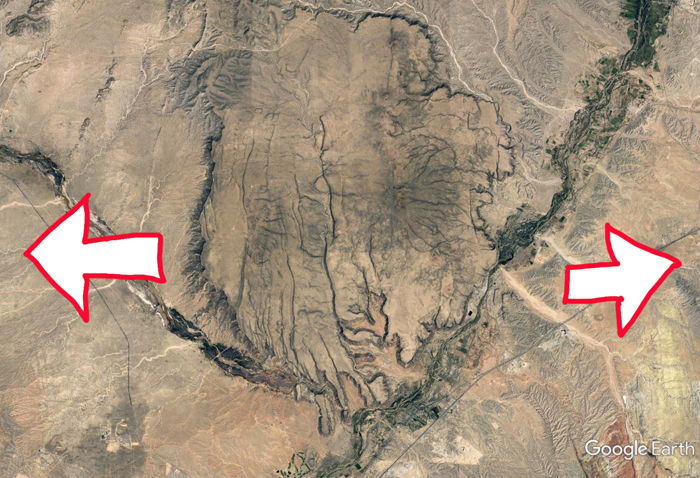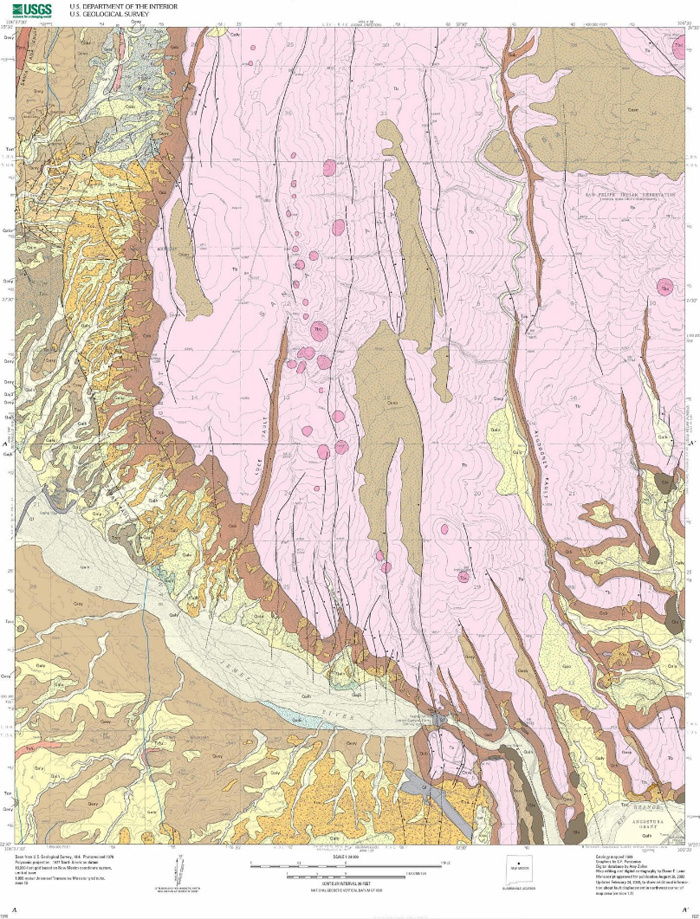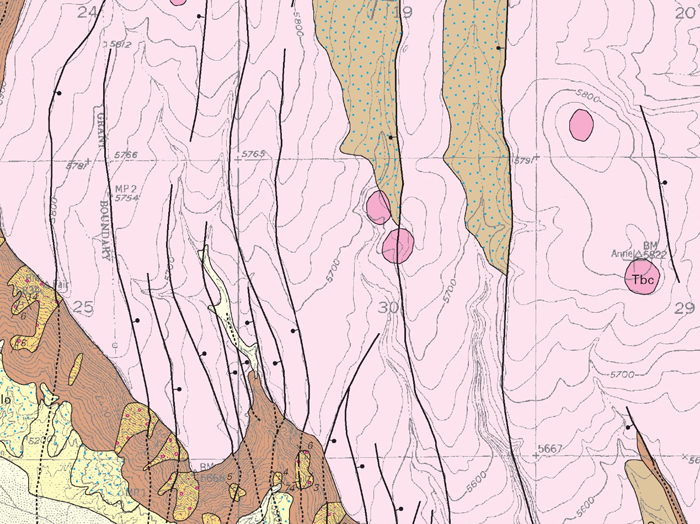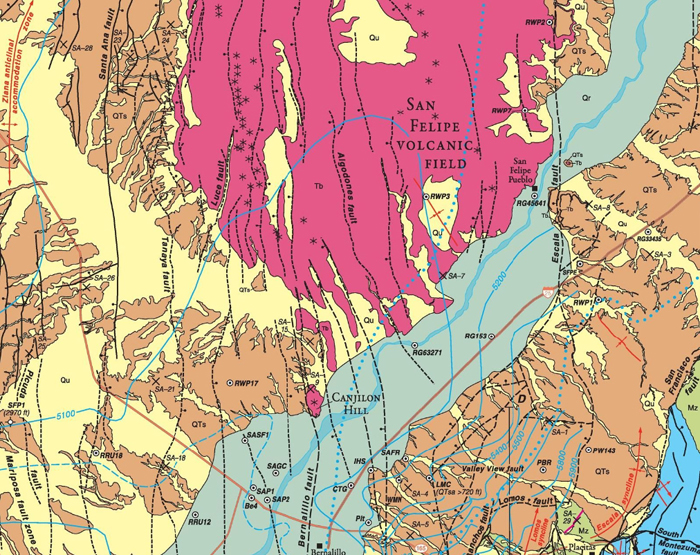Flying from Albuquerque to Denver last summer, en route to Montana from the Earth Educators’ Rendezvous, I flew over a landscape that looked like the geomorphology was controlled by normal faulting. The view here is looking to the east, from a position in the air a bit north of Albuquerque:

…Zooming in closer on the set of parallel valleys that appear to be controlled by normal faulting:

Today, I was cleaning out my camera’s memory card in anticipation of next week’s Structural Geology and Tectonics Forum, and I saw these photos again. I considered them, noting the north-south trend of the faults, which struck me as likely to be controlled by tectonic extension along the Rio Grande Rift. I went to Google Earth to see if I could find the place, and sure enough, I was able to:

The arrows show my east-west extension hypothesis.
But the Google Earth view didn’t confirm for me that the cracks were faults rather than joints. I needed a geologic map for that.
So, using the National Geologic Map Database, I found this map by S.F. Personius (2002): a Geologic map of the Santa Ana Pueblo quadrangle.

Zooming in, you can see the little “lollypop” icons coming off the faults – this indicates normal faulting and tectonic extension:

The “lollypops” are on the down-dropped (hanging wall) side of the fault.
The NGMDB also allowed me to find a Geologic map of the Albuquerque – Rio Rancho metropolitan area and vicinity by S.D. Connell (2008), which labeled this faulted plateau as the San Felipe Volcanic Field:

The New Mexico Bureau of Geology and Mineral Resources labels the plateau itself as Santa Ana Mesa:

So it looks like crustal stretching east-west along the Rio Grande Rift opened up a series of north-south trending faults. This stretched the crust east-to-west, but also tapped into magma, which was brought to the surface and erupted as the San Felipe Volcanic Field. Additional later extension broke the volcanic rocks in more north-south trending faults, and then erosion etched out those, making a series of horsts and graben(s), and accentuating their parallelism into the surface of the Santa Ana Mesa’s land surface.
This to me is a very satisfying thing to be able to do: to notice something out an airplane window, then track down the details through a series of open-access publications on the web, and come to a better understanding of the place.
Yippee!

What fun sleuthing. Thanks for sharing it.
As I high school science teacher, I am very grateful for such an excellent example of science in action. I will remember this post and reference it when I teach Earth Science again. Your post is a perfect example of the claim-evidence-reasoning scheme that is central to the Next Generation Science Standards. Thank you for sharing your sleuthing!
🙂
That was fun! Thanks for sharing.
Thank you so much! I too like to photograph areas from my occasional flights from Austin Texas to San Francisco and I happened to do just that this past Monday. Anxious to see what areas I had flown over I used Google Lens and was able to identify the intriguing large circular area with solar panel looking things arranged in complete circles. Then on to read about what they are designed to do and so on. Coming across your information just felt so great.